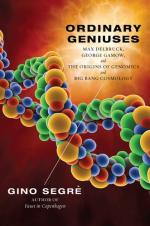|
This section contains 376 words (approx. 2 pages at 300 words per page) |
World of Biology on Max Delbruck
Max Delbruck, the youngest of seven children, was born in Berlin, Germany on September 6, 1906. In 1924 he began university studies in astronomy and astrophysics and in 1930 received a Ph.D. in physics from the University of Göttingen. As a post-doctoral student, he traveled to Copenhagen, Denmark, where he worked with Niels Bohr, the theorist who proposed the model of the atom. After further work in Zurich, Switzerland, and Berlin, Delbruck left Germany for the United States in 1937, following Hitler's takeover.
In the United States, Delbruck studied biology and genetics at the California Institute of Technology under a Rockefeller Foundation grant and, while studying the genetics of fruit flies, became interested in the genetics of bacteriophages, large viruses that infect bacteria. Along with Emory Ellis, a biologist, Delbruck developed experimental methods to investigate bacteriophages and mathematical systems to analyze the results of the experiments. They published their results in 1939. In 1940, Delbruck met Salvador Luria, an Italian-American biologist conducting bacteriophage research at Columbia University. The two found that they shared interests and thus began a collaboration of research focused on mutations in bacteria that produced resistance to bacteriophages. Together, Delbruck and Luria published their work in 1943. They presented the first evidence that bacterial heredity is controlled by genes, and in doing so, overturned prevailing ideas about how genetic traits are acquired. Their work began the sciences of bacterial genetics and molecular biology.
Delbruck's work with Luria and Alfred Hershey, a microbiologist, standardized bacteriophage research. In 1946 Delbruck and Hershey independently demonstrated that genetic material from different viruses could be combined to form a virus different from either. They called this phenomenon genetic recombination, and their groundbreaking work paved the way for other geneticists to make further discoveries about bacteriophages, culminating with the discovery that deoxyribonucleic acid, or DNA, is the genetic material. By the early 1950s Delbruck received a letter from his friend James Watson, detailing the double helix structure of DNA. Delbruck 's casual manner and wit provided a relaxed atmosphere, and thus his laboratory became a meeting place for many molecular biologists working on problems in genetics. His contributions were recognized in 1969 when he, Hershey, and Luria shared the Nobel Prize in physiology or medicine for work in replication and genetic structure of viruses.
|
This section contains 376 words (approx. 2 pages at 300 words per page) |


